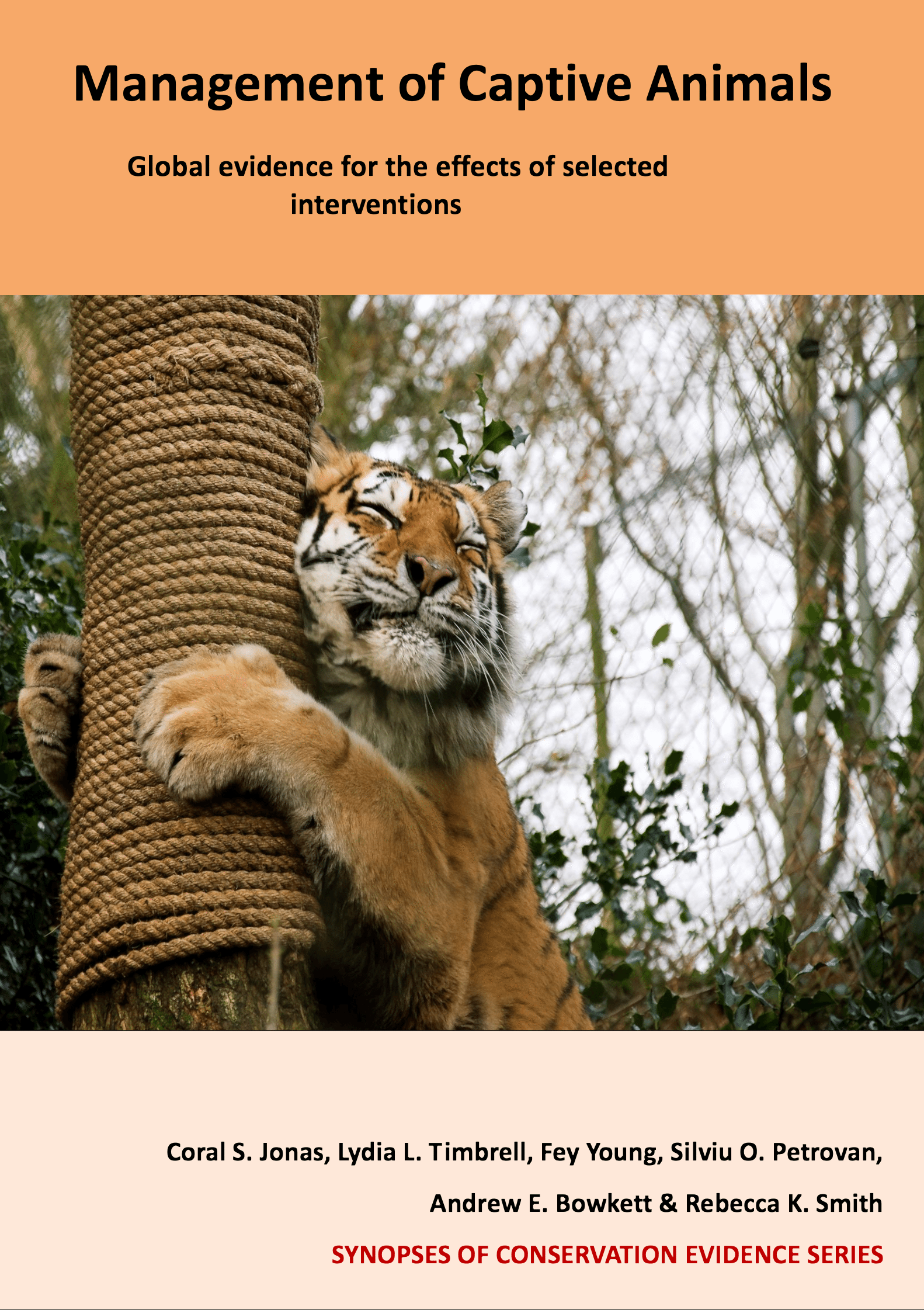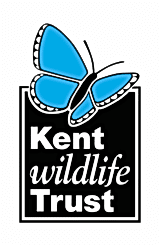Actions to conserve biodiversity
We have summarised evidence from the scientific literature about the effects of actions to conserve wildlife and ecosystems.
Review the evidence from the studies
Not sure what Actions are? Read a brief description.
96 Actions found
Refine
Hide
96 Actions found
Download Actions
Order results by:
| Action | Effectiveness | Studies | Category | |
|---|---|---|---|---|
Primates: Present food which requires the use (or modification) of tools Action Link | No evidence found (no assessment) | 0 | ||
Primates: Paint gum solutions on rough bark Action Link | No evidence found (no assessment) | 0 | ||
Primates: Add gum solutions to drilled hollow feeders Action Link | No evidence found (no assessment) | 0 | ||
Primates: Provide gum (including artificial gum) Action Link | No evidence found (no assessment) | 0 | ||
Primates: Provide nectar (including artificial nectar) Action Link | No evidence found (no assessment) | 0 | ||
Primates: Provide herbs or other plants for self-medication Action Link | No evidence found (no assessment) | 0 | ||
Primates: Modify ingredients/nutrient composition seasonally (not daily) to reflect natural variability Action Link | No evidence found (no assessment) | 0 | ||
Primates: Provide food at natural (wild) feeding times Action Link | No evidence found (no assessment) | 0 | ||
Primates: Provide access to food at all times (day and night) Action Link | No evidence found (no assessment) | 0 | ||
Primates: Use of automated feeders Action Link | No evidence found (no assessment) | 0 | ||
Primates: Feed individuals separately Action Link | No evidence found (no assessment) | 0 | ||
Primates: Feed individuals in subgroups Action Link | No evidence found (no assessment) | 0 | ||
Amphibians: Vary duration of enclosure lighting to simulate seasonal changes in the wild Action Link | No evidence found (no assessment) | 0 | ||
Amphibians: Simulate rainfall using sound recordings of rain and/or thunderstorms Action Link | No evidence found (no assessment) | 0 | ||
Amphibians: Vary enclosure humidity to simulate seasonal changes in the wild using humidifiers, foggers/misters or artificial rain Action Link | No evidence found (no assessment) | 0 | ||
Amphibians: Allow temperate amphibians to hibernate Action Link | No evidence found (no assessment) | 0 | ||
Amphibians: Vary water flow/speed of artificial streams in enclosures for torrent breeding species Action Link | No evidence found (no assessment) | 0 | ||
Amphibians: Allow amphibians from highly seasonal environments to have a period of dormancy during a simulated drought period Action Link | No evidence found (no assessment) | 0 | ||
Amphibians: Provide visual barriers for territorial species Action Link | No evidence found (no assessment) | 0 | ||
Amphibians: Manipulate adult density within the enclosure Action Link | No evidence found (no assessment) | 0 | ||
Amphibians: Vary food provision to reflect seasonal availability in the wild Action Link | No evidence found (no assessment) | 0 | ||
Amphibians: Formulate adult diet to reflect nutritional composition of wild foods Action Link | No evidence found (no assessment) | 0 | ||
Amphibians: Supplement diets with vitamins/ calcium fed to prey (e.g. prey gut loading) Action Link | No evidence found (no assessment) | 0 | ||
Amphibians: Supplement diets with vitamins/ calcium applied to food (e.g. dusting prey) Action Link | No evidence found (no assessment) | 0 | ||
Amphibians: Leave infertile eggs at spawn site as food for egg-eating larvae Action Link | No evidence found (no assessment) | 0 |
Download Actions

Management of Captive Animals - Published 2018
Captive Animal Synopsis
Watch this search
If you are familiar with RSS feeds, please click the button below to retrieve the feed URL:
RSS feed for this searchIf you are unfamiliar with RSS feeds, we would suggest reading this BBC article.
Unfortunately, due to the number of feeds we have available, we cannot provide e-mail updates. However, you could use tools such as Feed My Inbox to do this for you.
What are 'Individual studies' and 'Actions'?
Individual studies
An individual study is a summary of a specific scientific study, usually taken from a scientific journal, but also from other resources such as reports. It tells you the background context, the action(s) taken and their consequences.
If you want more detail please look at the original reference.
Actions
Each action page focuses on a particular action you could take to benefit wildlife or ecosystems.
It contains brief (150-200 word) descriptions of relevant studies (context, action(s) taken and their consequences) and one or more key messages.
Key messages show the extent and main conclusions of the available evidence. Using links within key messages, you can look at the paragraphs describing each study to get more detail. Each paragraph allows you to assess the quality of the evidence and how relevant it is to your situation.
Where we found no evidence, we have been unable to assess whether or not an intervention is effective or has any harmful impacts.




















